Art
South African Play Explores Impact of Historic Xhosa Prophetess Nongqawuse
Navdeep Jassal, has been traveling in South Africa for the last five months and recently had the opportunity to review a play in Johannesburg. Presented by Africa Creations Production Company, the play reveals the nature of African indigenous spirituality. “The Rise and Fall of the African Gospel: Nongqawuse” was created, written and directed by Mbongeni Moroke who was inspired by the historic events of 1856-7 and the miseducation that followed.
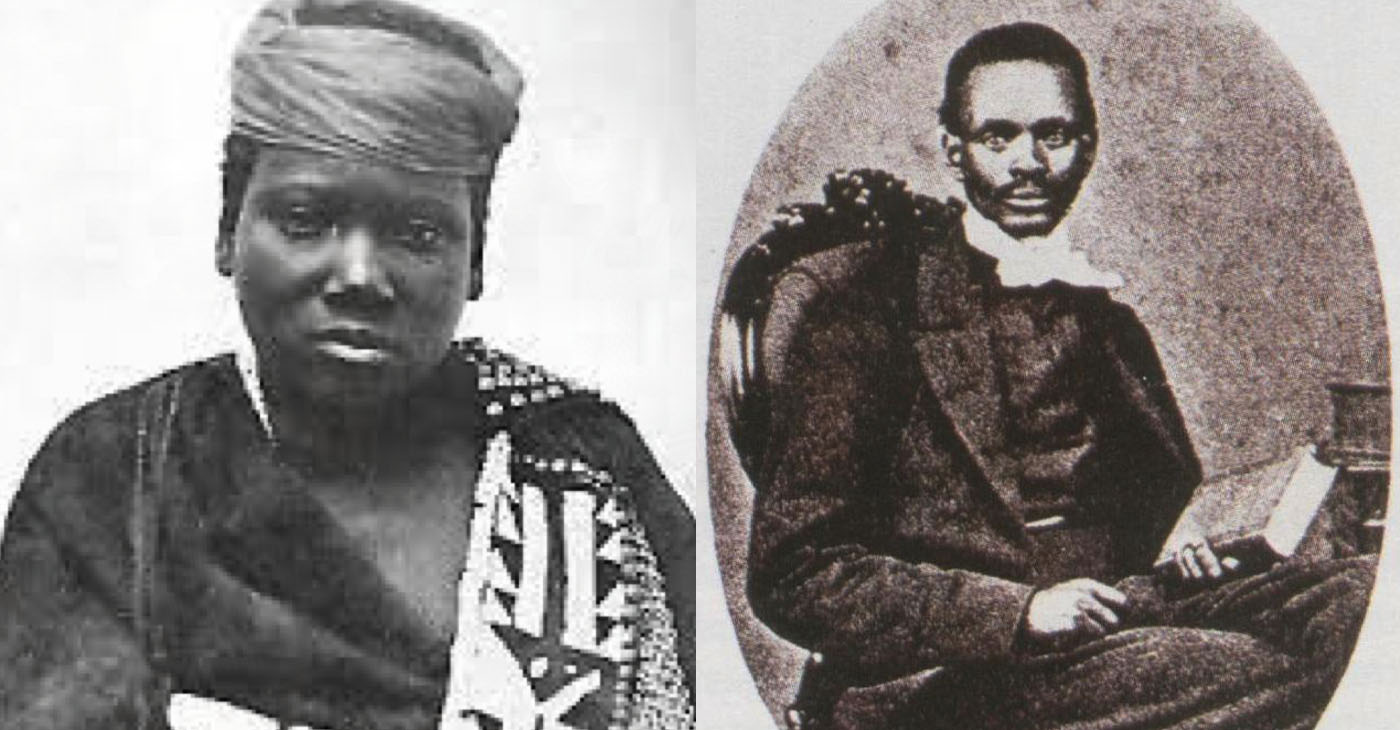
By Navdeep Jassal
Post News Group Contributor
Navdeep Jassal, has been traveling in South Africa for the last five months and recently had the opportunity to review a play in Johannesburg. Presented by Africa Creations Production Company, the play reveals the nature of African indigenous spirituality.
“The Rise and Fall of the African Gospel: Nongqawuse” was created, written and directed by Mbongeni Moroke who was inspired by the historic events of 1856-7 and the miseducation that followed.
Though performed in the Xhosa language, with a few short excerpts in English for non-Xhosa speakers, I had the opportunity to speak with Moroke — who portrayed Mhlakaza, a sangoma (traditional healer) and father to Nongqawuse. This article is gleaned from our conversations.
The play is about two well-known historical figures for the Xhosa: Their young maiden prophetess, Nongqawuse, and South Africa’s first Black Christian Presbyterian minister, Tiyo Soga.
For background’s sake, it must be understood that according to African indigenous spirituality, cows are slaughtered to summon the ancestors’ protection. In 1856, cattle represented the primary measure of wealth among the Xhosa, and the word to the king from prophetess Nongqawuse that cattle should be killed to hide the wealth from the arriving Christian missionaries was shocking.
The message came in a time when the Xhosa nations’ strength and trust in its leadership had been eroding after a great king had been assassinated by Christian missionaries in the early 1800s following his betrayal by his own counsel and other Xhosa leaders.
That “negative aura persisted around the kings,” making for a continual threat to Xhosa unity, Moroke said.
And unity is key: According to South African spirituality, God the Creator cannot intervene in a divided nation; therefore, after the slaughter, the rising of the ancestors foreseen by Nongqawuse did not happen in the way it was expected.
Enter Tiyo Soga, the son of a chief counselor to the king who had turned away from Xhosa tradition and followed in his Christian mother’s footsteps. He eventually traveled to Scotland to study religion and theology and returned as a Christian evangelist.
By then, Xhosa society was divided like never before. The Christian missions became the sanctuary and refuge for the hordes of hungry, famished people — their grain silos empty, their cattle no more, and their land useless.
While 16-year-old Nongqawuse was labeled a false prophet and scapegoated, Soga and lesser-known Black individuals spread the new religion by white Christian missionaries throughout Xhosa land.
Moroke’s inspiration is a righteous one: The spirit of God the Creator existed before the Bible in
Africa and Moroke speaks from and uses the African indigenous spiritual lens in his work as playwright, director, actor, and musician, demonstrating that spirituality in ancient Africa was powerful.
Through entertainment, Moroke strives to re-educate Black South Africans on the value of their own history, valor and spirituality.
The opening scene takes place on Robben Island more than 100 years before Nelson Rolihlahla Mandela was a political prisoner there. Three broken Xhosa kings shed tears as white Christian missionaries locked them up, thus destroying their ability to provide spiritual guidance to their tribesmen and women.
In his signature style, the first scene becomes the final scene as well, but for nearly two hours, Moroke takes the audience through the events that led to the kings’ capture.
“There are three things which control the world: economics, politics and religion,” said Moroke. “When a nation is ruling well within these three sectors, that nation becomes the most powerful nation in the world. So, white Christian missionaries took charge in Africa in these three sectors and used religion through the Bible to destroy and rule us.
“Every generation has its mandate and the last generation had politics as its mandate,” Moroke said. “As someone representing the current generation, the mandate is to revisit indigenous and spiritual history and go back to the core problems which led to apartheid. I am trying to answer a question of this generation in terms of what went wrong, and why are we here after all the struggles and voting in 1994.”
Although I could not piece it all together due to language barriers and lack of context, as I sat in the audience, I knew what I was watching was very moving and powerful.
There were some audience members crying because the play resonated with their backgrounds as African people. And, for others, the play resonated in terms of family whether it was family disfunction or affection.
Two Xhosa people said that when the ‘king’ was coming onto the stage, they had a vision of that actual king coming. Another sangoma said she learned many things from Moroke’s character about the discipline of a sangoma.
For more information direct message Africa Creations on social media: Facebook Africa-Creations; Instagram @africa_creations; Twitter @Afric_Creations; or email africacreationsmail@gmail.com and watch YouTube videos @africacreations8130.
Activism
Griot Theater Company Presents August Wilson’s Work at Annual Oratorical Featuring Black Authors
The performance explores the legacy of Pulitzer Prize-winning playwright August Wilson whose 10-play Century Cycle chronicles the African American experience across the 20th century, with each play set in a different decade. “Half a Century” journeys through the final five plays of this monumental cycle, bringing Wilson’s richly woven stories to life in a way that celebrates history, resilience, and the human spirit.
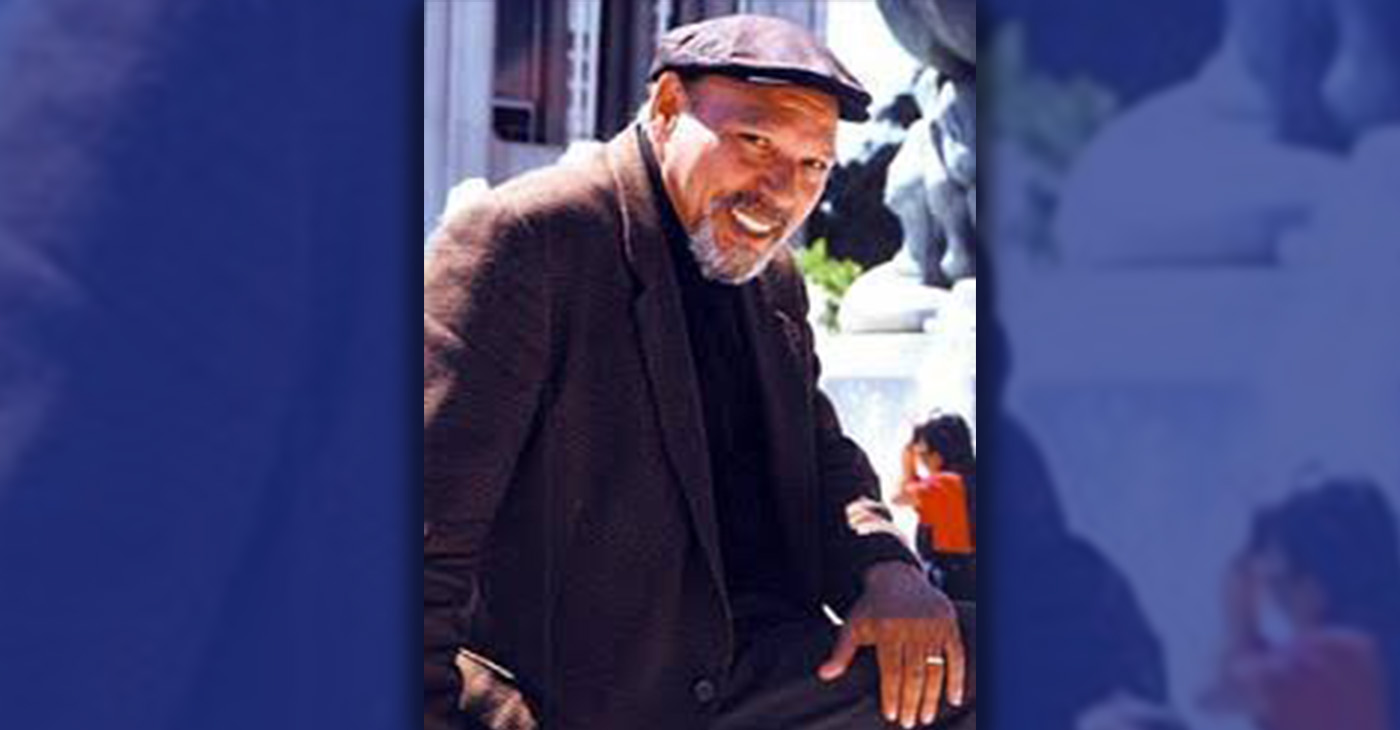
By Godfrey Lee
Griot Theater Company will present their Fifth Annual Oratorical with August Wilson’s “Half a Century,” at the Belrose on 1415 Fifth Ave., in San Rafael near the San Rafael Public Library.
The performance explores the legacy of Pulitzer Prize-winning playwright August Wilson whose 10-play Century Cycle chronicles the African American experience across the 20th century, with each play set in a different decade. “Half a Century” journeys through the final five plays of this monumental cycle, bringing Wilson’s richly woven stories to life in a way that celebrates history, resilience, and the human spirit.
Previous performance highlighting essential Black American authors included Maya Angelou, James Baldwin, and Lorraine Hansberry with Langston Hughes.
The play will be performed at 3:00. p.m. on Feb. 20, 21, 22, 27, and 28 at 7:00 p.m., and on Feb. 23 at 3:00 p.m.
For more information, go to griottheatercompany.squarespace.com/productions-v2
Activism
MLK Day of Service Volunteers Make Blankets and Art for Locals in Need
“Everyone has an opportunity to participate,” said Glenda Roberts, kinship support care program manager at CCYSB. “Our nonprofit organization and participants recognize how important it is to give back to the community and this is serving. As Dr. Martin Luther King, Jr. stated, ‘Everybody can be great…because anybody can serve.’”
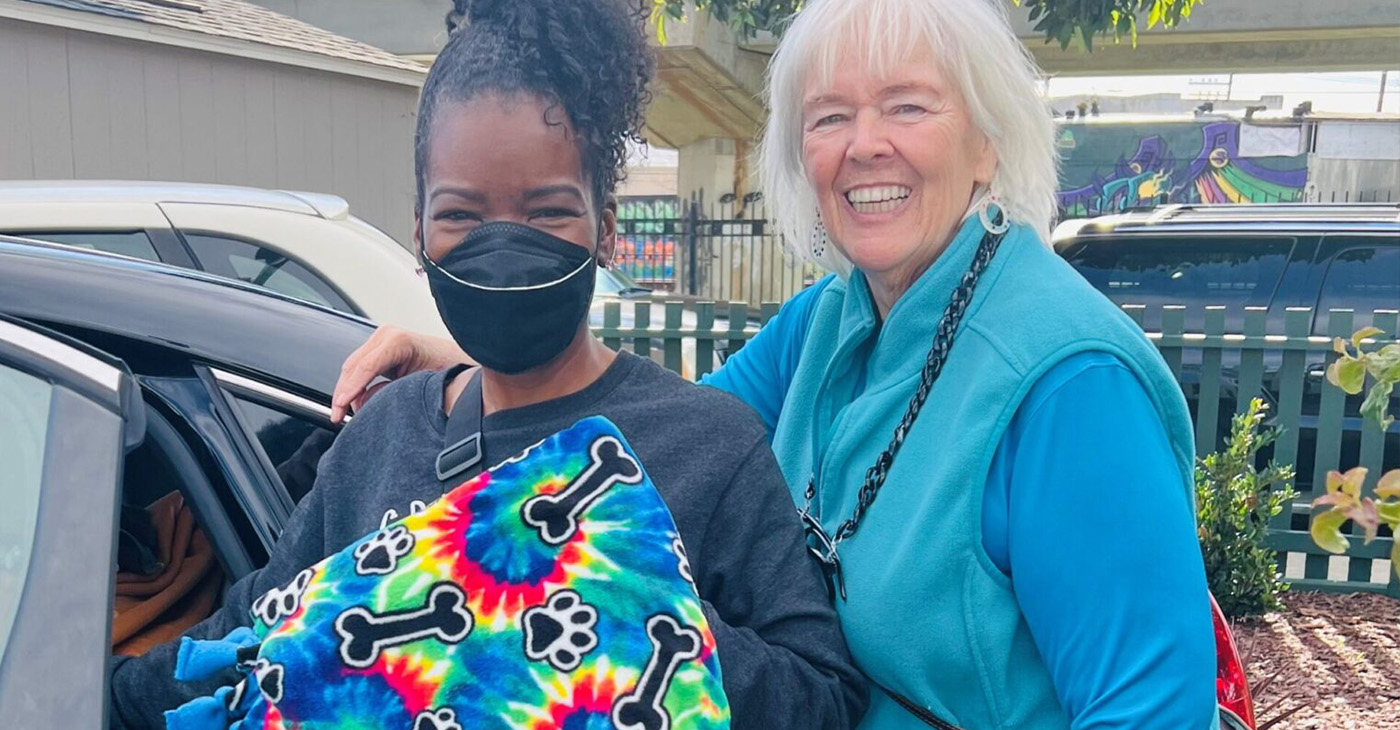
By Kathy Chouteau
The Richmond Standard
The Contra Costa Youth Service Bureau (CCYSB) and Bethlehem Missionary Baptist Church (BMBC) are collaborating with a team of volunteers for a Dr. Martin Luther King, Jr. Day of Service, Monday, Jan. 20 that will wrap the community’s most vulnerable people in warm blankets and provide them with an uplifting gift of art.
Volunteers will kick off their activities at BMBC at 11 a.m., making blankets for the unhoused people served by the Greater Richmond Interfaith Program (GRIP) and art for those in convalescence in Richmond.
Others will get to work preparing a lunch of chili, salad, a veggie tray, and water for participants, offered courtesy of CCYSB, while supplies last.
“Everyone has an opportunity to participate,” said Glenda Roberts, kinship support care program manager at CCYSB. “Our nonprofit organization and participants recognize how important it is to give back to the community and this is serving. As Dr. Martin Luther King, Jr. stated, ‘Everybody can be great…because anybody can serve.’”
“People of all ages are welcome to participate in the MLK Day of Service,” said Roberts. Volunteers can RSVP via phone to Glenda Roberts at 510-215-4670, ext. 125.
CCYSB Boardmember Jackie Marston and her friends donated the materials and supplies to make the blankets and art projects. The nonprofit is also providing the day’s complimentary lunch, as well as employees to volunteer, under the direction of CCYSB Executive Director Marena Brown.
BMBC, led by Rev. Dr. Carole McKindley-Alvarez, is providing the facility for the event and volunteers from the church, which is located at 684 Juliga Woods St. in Richmond.
Located in Richmond, CCYSB is a nonprofit youth advocacy organization that serves eligible children, youth, and low-income families with a variety of wraparound services so they can thrive. Programs include academic achievement, youth mentorship, truancy prevention and direct response.
Art
Vandalism at Richmond Ferry Terminal Saddens Residents
Residents have been lamenting the destruction online. Ellen Seskin posted photos of the vandalism to the Facebook group, Everybody’s Richmond, on Jan. 12, saying she encountered it while out on a walk. “It was on the sidewalk, the street, the doors to the ferry, even in the art installation and the ‘stone’ benches,” she said. “I reported it but knowing how slow they are about getting things done — I just know that the longer you leave graffiti, the more likely they are to spray it again.”
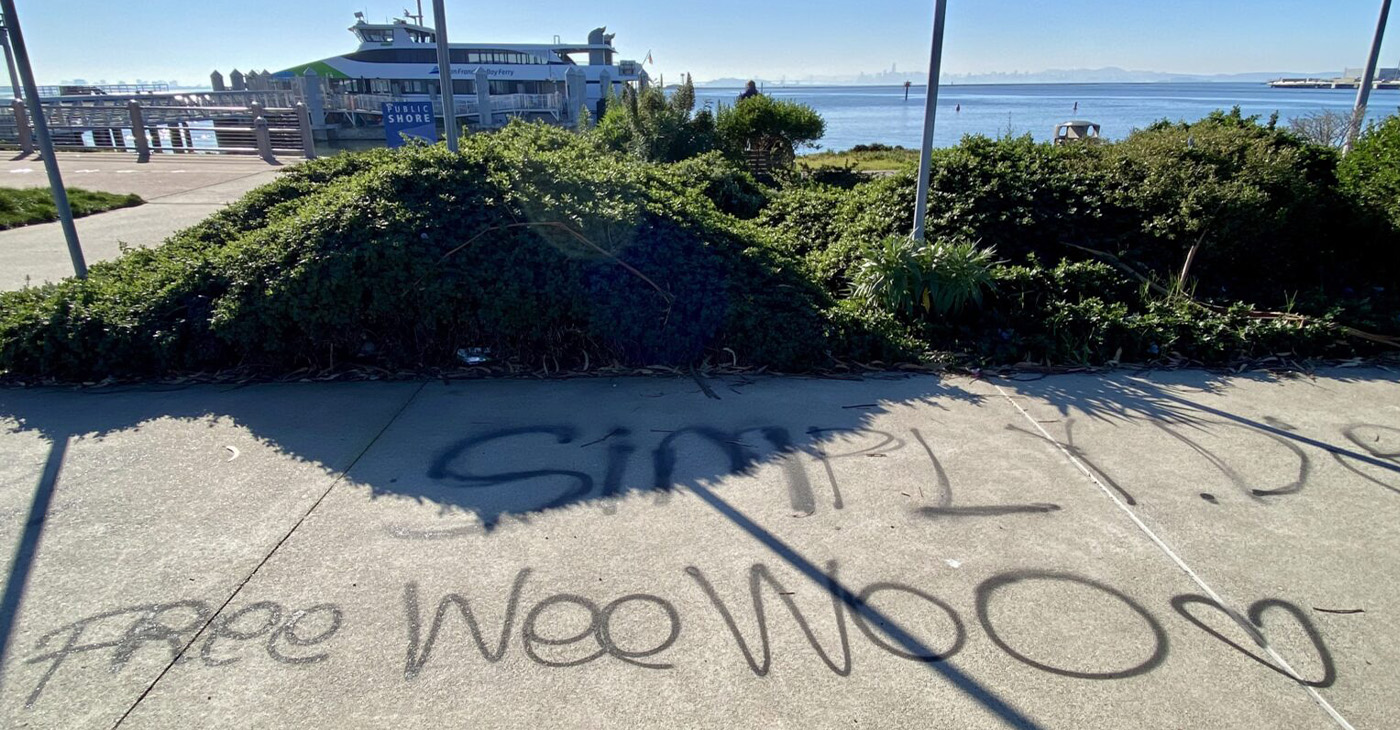
The Richmond Standard
“This is why we can’t have nice things,” stated the post on NextDoor.
The post referenced images of graffiti at the Richmond Ferry Terminal. Not just on the terminal, but also on public artwork, on trail signs, on public benches and the boardwalk.
On Wednesday, the Standard stopped by to see it for ourselves. The good news was that it appears the graffiti on the terminal and on the artwork, called Changing Tide, have been cleaned for the most part. But graffiti remained abundant in the area around the relatively new ferry terminal, which opened to the public just six years ago.
Graffiti artists tagged benches and the boardwalk. Cars that had done doughnuts in the street marked the cul-de-sac just outside the historic Craneway Pavilion.
A ferry worker told us the graffiti had been there since before he started working for the ferry service about a week ago.
A member of the Army Corps of Engineers who did not want to be named in this report called the scene “sad,” as “they’d done such a nice job fixing it up.”
“It’s sad that all this money has been spent and hoodlums just don’t care and are destroying stuff,” he said.
It wasn’t immediately clear how soon the graffiti would be removed. The Standard reported the graffiti to the city’s graffiti abatement hotline. We were prompted to leave a message reporting the address and location of the graffiti.
Residents have been lamenting the destruction online. Ellen Seskin posted photos of the vandalism to the Facebook group, Everybody’s Richmond, on Jan. 12, saying she encountered it while out on a walk.
“It was on the sidewalk, the street, the doors to the ferry, even in the art installation and the ‘stone’ benches,” she said. “I reported it but knowing how slow they are about getting things done — I just know that the longer you leave graffiti, the more likely they are to spray it again.”
In the comment section responding to Seskin’s post, local attorney Daniel Butt questioned why there aren’t cameras in the area.
On Nextdoor, one resident suggested searching to see if the tags match any accounts on Instagram, hoping to identify the perpetrator.
On its website, the City of Richmond says residents should graffiti immediately call Public Works graffiti removal and/or Code Enforcement at 510-965-4905.
Kathy Chouteau contributed to this report.
-
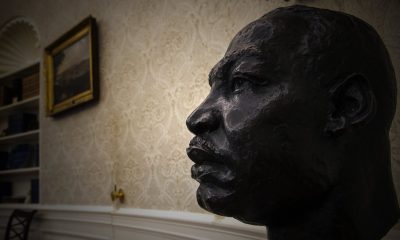
 #NNPA BlackPress3 weeks ago
#NNPA BlackPress3 weeks agoMLK Bust Quietly Removed from Oval Office Under Trump
-

 Activism3 weeks ago
Activism3 weeks agoOakland Post: Week of May 7 – 13, 2025
-

 Activism3 weeks ago
Activism3 weeks agoOakland Post: Week of April 30 – May 6, 2025
-

 #NNPA BlackPress3 weeks ago
#NNPA BlackPress3 weeks agoTrump Abruptly Fires First Carla Hayden: The First Black Woman to Serve as Librarian of Congress
-

 Activism1 week ago
Activism1 week agoNew Oakland Moving Forward
-

 Activism1 week ago
Activism1 week agoAfter Two Decades, Oakland Unified Will Finally Regain Local Control
-

 #NNPA BlackPress3 weeks ago
#NNPA BlackPress3 weeks agoBlack America Celebrates African Descent Heritage of Pope Leo XIV
-

 Alameda County1 week ago
Alameda County1 week agoOakland Begins Month-Long Closure on Largest Homeless Encampment























































